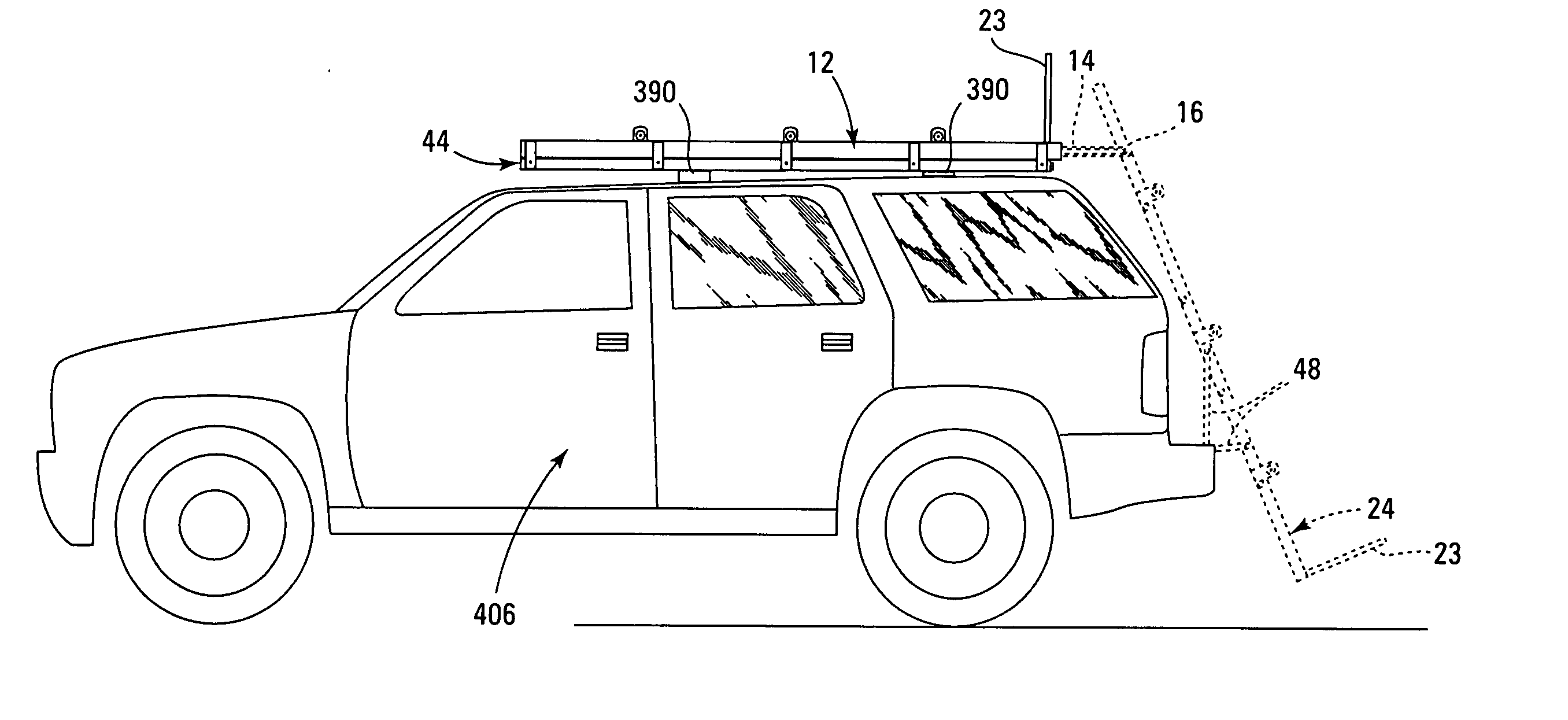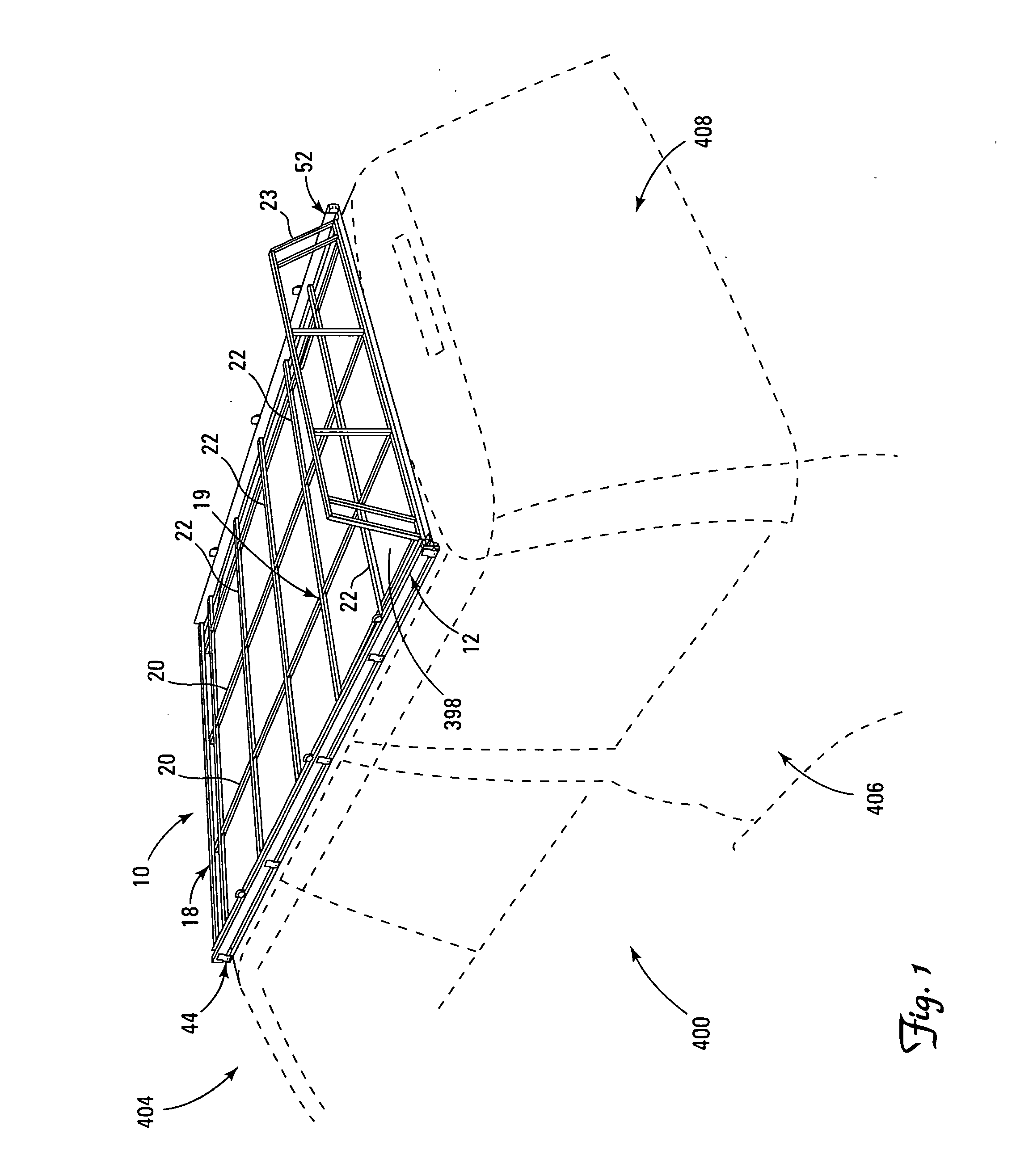Slidable pivoting roof rack
a roof rack and sliding technology, applied in the field of vehicle carrying systems, can solve the problems of soiled clothing plus scratches and other damage to the vehicle, the roof rack does not include features for securely holding particular types of equipment, and the current availability of roof racks
- Summary
- Abstract
- Description
- Claims
- Application Information
AI Technical Summary
Benefits of technology
Problems solved by technology
Method used
Image
Examples
Embodiment Construction
[0032] The present invention relates to a roof rack that may be installed upon the roof of a vehicle to facilitate placement of cargo thereon. Various embodiments of apparatus and methods in accordance with the present invention are illustrated throughout the figures for exemplary purposes and ease of description.
[0033]FIG. 1 shows a perspective view of an embodiment of the present invention 10 placed upon the roof 398 of a vehicle 400. The perspective view shows both the vehicle side 406 and the vehicle rear 408 in phantom. The vehicle front 404 is also indicated in this figure. The roof rack of the present invention 10 consists of two main components, a base 44 that engages the roof 398 of the vehicle 400 and a tray 18.
[0034] The tray 18 is slidably and pivotably mounted to the base, so that the tray 18 may be placed in a plurality of positions with respect to the base 44 and rotated with respect to the base 44. The tray 18 has two operational positions with respect to the base ...
PUM
 Login to View More
Login to View More Abstract
Description
Claims
Application Information
 Login to View More
Login to View More - R&D
- Intellectual Property
- Life Sciences
- Materials
- Tech Scout
- Unparalleled Data Quality
- Higher Quality Content
- 60% Fewer Hallucinations
Browse by: Latest US Patents, China's latest patents, Technical Efficacy Thesaurus, Application Domain, Technology Topic, Popular Technical Reports.
© 2025 PatSnap. All rights reserved.Legal|Privacy policy|Modern Slavery Act Transparency Statement|Sitemap|About US| Contact US: help@patsnap.com



